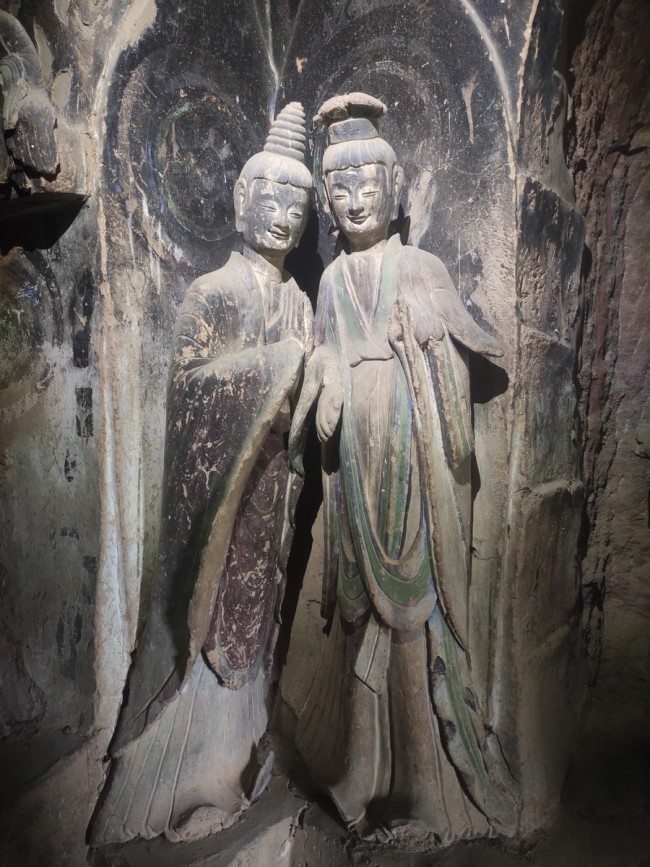Precious repositories of piety and prestige

A sculpture from the Northern Wei Dynasty (386-534) in Cave 121 of the Maijishan Grottoes showing a smiling bodhisattva and a monk. [Photo provided to China Daily]
In Dunhuang, to the western end of the Hexi Corridor, 492 grottoes with exquisite murals and statues ranging from the 4th to 14th centuries in the Mogao Caves are like an encyclopedia in stone telling the legends of numerous peoples of the Silk Road. While near its eastern edge, the Maijishan Grottoes in Tianshui display beautiful smiling faces that bestow human emotion on the solemnity of deities.
Both sites are inscribed on the UNESCO World Heritage List.
There are about 200 extant Buddhist grotto sites in Gansu. Most of them are situated along the Hexi Corridor.
"At the global level, major sites like Mogao and Maijishan, together with the hundreds of smaller cave complexes along the Hexi Corridor, all preserve a remarkable legacy of cultural interaction and human creativity over the past 1,600 years," says Neil Schmid, an American Sinologist and a researcher with the Dunhuang Academy, the prestigious research institution based in the Mogao site, which also oversees several other grotto complexes along the Hexi Corridor.
In 1987, Schmid, then a student, went to the Mogao Caves as a tourist for the first time. Enthralled by the cultural wonder, Schmid switched the focus of his studies and grew into an acclaimed scholar on the Silk Road and, in particular, the visual culture of Buddhism. In 2018, he became the first full-time overseas researcher in the 78-year-old history of the Dunhuang Academy.
"One might be tempted to compare locations in the West, say, Notre Dame Cathedral in Paris, to the Mogao Caves-each is a world-renowned, sacred site with its own exquisite features and distinct history," Schmid says. "But a fundamental difference is that Mogao, like other Gansu grotto complexes, lies directly on an important economic and cultural trade route across Eurasia.
"Because of that exceptional geographical position, not only did these sites develop within a complex cultural matrix, they were also obliged to adapt and evolve with changes in religious practices, doctrines, and artistic styles over hundreds of years, resulting in the uniquely layered heritage sites that we have today."
According to Schmid, rock temples and caves were originally an Indian phenomenon that spread across the Pamirs, through the areas in today's Xinjiang Uygur autonomous region, and then into Gansu. For the first few centuries of Buddhism's entry into China, the primary route for the religion was along the Silk Road to the central plains.
-
As AI encounters Dunhuang's art, the ancient caisson ceiling bridges centuries to the present.
View all stories

 Gansu thrives from green development
Gansu thrives from green development  >
>